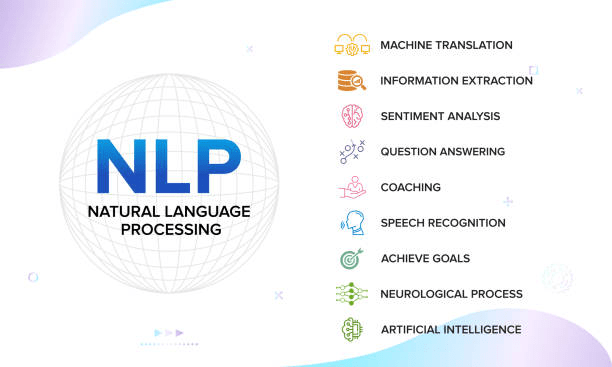What Is #Natural Language Processing?
Natural language processing (#NLP) is the ability of a computer to understand human speech, text, and other forms of communication. The goal of natural language processing is to allow computers to interpret human languages and respond in ways that are as natural as possible. NLP is an umbrella term for a lot of different specific types of AI that are all focused on understanding human communication. Natural language processing is used for everything from search engines to voice assistants like Alexa or Google Home. It helps you communicate with your computer and get things done without having to memorise commands or navigate through complicated menus.
NLP can be used for many things, but there are some common #applications:
– #Speech recognition: This means that you’re trying to get a computer to hear and understand human speech in real time. For example, if you have a conversation with your phone using voice commands, that’s speech recognition at work.
– #Text analysis and #translation: This is when you’re trying to get a computer to analyse text in some way—for example, by extracting sentiment from reviews or identifying key topics in an article.

What Are Some Causes Of Inaccurate Data ?

One cause is human error. Humans are fallible creatures, and when information is being entered into a system, it’s easy to make mistakes. This can happen while inputting data or while retrieving data from the system.
Another cause is hardware failure. If a hard drive malfunctions, then the data on that hard drive will become corrupted and incorrect information will be displayed even if it was entered correctly in the first place.
A third cause is software malfunction. If there’s a bug in how your software works or if the software is outdated, it may not be able to handle certain types of input or display information in an accurate way despite having been entered correctly at first.
Benefits Of Using Natural Language Processing
Natural language processing is a #powerful tool for analysing the meaning of written text. When you’re working with a large amount of data, it’s important to know how to use natural language processing to extract meaning from that data.
Natural language processing can help you answer questions like:
-What are people saying about my brand on social media?
-How can I determine which parts of my site are most likely to be clicked on?

The benefits of natural language processing include:
-It’s faster than traditional methods of data analysis.
-It requires less manual effort on the part of the analyst.
-Machine learning algorithms can be used to automatically improve results over time as more data is processed by them.
– It makes it easier to learn than other coding languages.
– It helps you build better software that understands businesses and data better.
– It’s useful for building chatbots, voice assistants, and other smart devices that rely on natural language recognition to perform tasks for people.
How Does Natural Language Processing Work?
NLP uses #algorithms to analyse and interpret #textual data, like what you type into a search bar or what you write in an email. In order to do natural language processing, you need two things: a source of data and some code that you can use to analyse that data.
Most of us use NLP every day without even realising it—if you’ve ever used Google Translate or Siri for iPhone, you’ve seen how computers can parse sentences and break them down into pieces of information that make sense to them. These types of applications are powered by NLP.
But NLP isn’t just about translating text from one language to another—it also has applications in fields like data cleansing, marketing and finance, where computers can be taught to understand complex concepts and respond appropriately.

NLP is a term that encompasses a lot of different tasks and sub-problems, which can be broken down into three main categories:
1) #Understanding: This is essentially trying to understand what a sentence means in its context. It involves things like extracting entities (people, places, organisations), detecting sentiment (positive/negative), and identifying relationships between entities.
2) #Generation: This involves coming up with a response based on information you have about what the user has said or selected.
3)# Question Answering: This is answering questions posed by users directly instead of having them select options from predetermined lists of choices like we do in most apps today (like when we ask Siri or Alexa what time it is )
